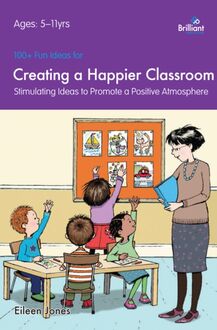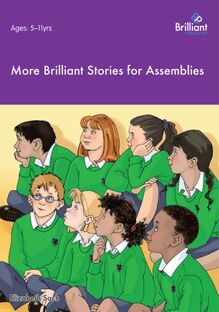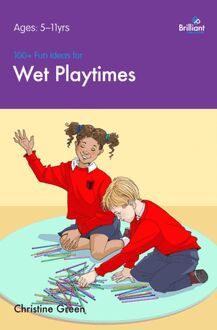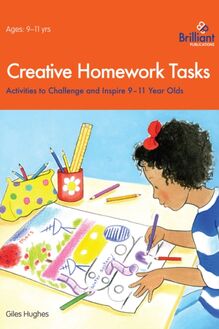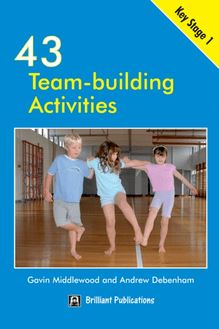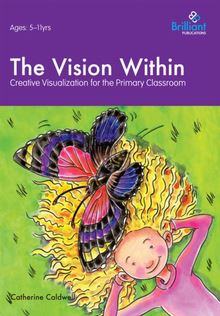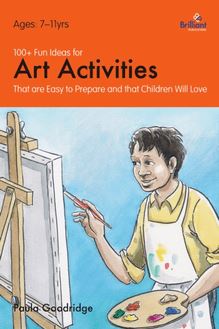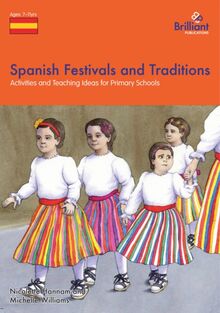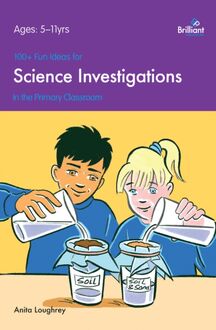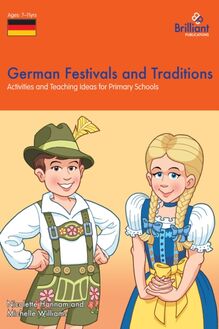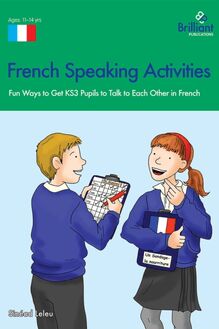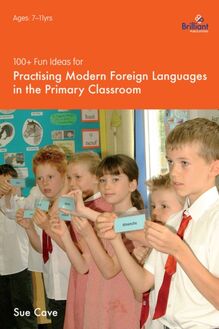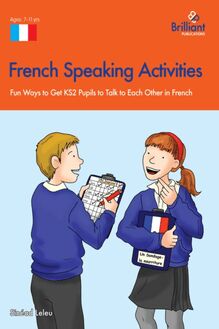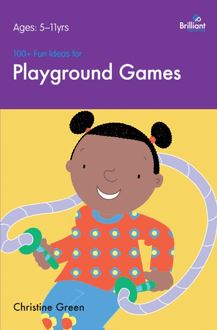-
 Univers
Univers
-
 Ebooks
Ebooks
-
 Livres audio
Livres audio
-
 Presse
Presse
-
 Podcasts
Podcasts
-
 BD
BD
-
 Documents
Documents
-
- Cours
- Révisions
- Ressources pédagogiques
- Sciences de l’éducation
- Manuels scolaires
- Langues
- Travaux de classe
- Annales de BEP
- Etudes supérieures
- Maternelle et primaire
- Fiches de lecture
- Orientation scolaire
- Méthodologie
- Corrigés de devoir
- Annales d’examens et concours
- Annales du bac
- Annales du brevet
- Rapports de stage
La lecture à portée de main
Vous pourrez modifier la taille du texte de cet ouvrage
Découvre YouScribe en t'inscrivant gratuitement
Je m'inscrisDécouvre YouScribe en t'inscrivant gratuitement
Je m'inscrisEn savoir plus
Vous pourrez modifier la taille du texte de cet ouvrage
En savoir plus

Description
Sujets
Informations
| Publié par | Andrews UK |
| Date de parution | 24 avril 2012 |
| Nombre de lectures | 2 |
| EAN13 | 9780857475374 |
| Langue | English |
Informations légales : prix de location à la page 0,0524€. Cette information est donnée uniquement à titre indicatif conformément à la législation en vigueur.
Extrait
100+ Fun Ideas for Transition Times
Eileen Jones
Published by Brilliant Publications
Unit 10, Sparrow Hall Farm
Edlesborough, Dunstable
Bedfordshire, LU6 2ES, UK
www.brilliantpublications.co.uk
E-mail: brilliant@bebc.co.uk
Digital edition converted and published in 2012 by
Andrews UK Limited
www.andrewsuk.com
The name Brilliant Publications and the logo are registered trademarks.
Written by Eileen Jones
Illustrated by Emily Skinner
© Text Eileen Jones 2009
© Design Brilliant Publications 2009
First printed and published in the UK in 2009
The right of Eileen Jones to be identified as the author of this work has been asserted by herself in accordance with the Copyright, Designs and Patents Act 1988.
All rights reserved. No part of this publication may be reproduced, stored in a retrieval system or transmitted in any form or by any means, electrical, mechanical, photocopying, recording or otherwise, without the prior written permission of the publisher.
Preface
This book is crammed with stimulating ideas for the awkward, transition times of the day. Although short occasions, these can be the times that present teachers with the most difficulties. The activities here are chosen carefully, with the occasions and the children’s likely needs in mind. Nevertheless, you are the expert on your own class. You know what will most benefit them now: a game, relaxation, exercise, or talking to and getting to know one another. Therefore, select what you want when you want it, choosing the activity to fit that day’s timetable, weather, or stage of the year.
Many of the day’s transition times vary in length from day to day (your end of the day session may be longer sometimes than others) or from child to child (not everyone arrives at school at the same time). You can avoid frustrating, unfinished activities by tying up loose ends in a later lesson in the day or with homework. Alternatively, many of the activities have links to ideas in other chapters of the book, so avoiding the children feeling they are time-filling.
The aim of these ideas is to make the classroom a happy place to return to. Therefore, the activities are both enjoyable and hold the children’s interest. In addition, they foster important attitudes: Involvement with classmates Working as a team Physical and mental health Self-esteem
Resources recommended are trouble-free. Nevertheless, be smart: if you make a resource, save it as hardcopy or a file for your interactive whiteboard (IWB). That way, activities can be repeated, while simple adaptations of a resource are often suggested for a second activity.
Finally, remember to have fun! These activities are meant to be enjoyed. They will refresh repetitive routines, such as lining-up and answering the register, and they will smoothly link the changes of focus or environment. It is because of these that the rest of the day will go well.
With these activities in place, the rest of the day will run smoothly.
Chapter 1: Morning arrival
Morning arrival can set the pattern of the whole day. For the best start, your classroom needs to be welcoming, friendly and inclusive. Children are happiest with an immediate focus and these activities offer them something to do, look at or talk about. They are purposeful, yet fun.
Not everyone may arrive at the same time, but you can avoid the need for repeated explanations by giving advance details of an activity on a previous day, or encouraging children to inform later arrivals of what they are doing. Help yourself further by preparing instructions or resources in advance, so they are ready for speedy display. Time spent preparing and saving computer files for an IWB is particularly worthwhile: it becomes easy to repeat ideas such as Teacher in trouble (Activity 17) or to create a new activity from Shopping trolleys (Activity 18).
These staggered arrival times often make it impossible to ensure that everyone completes an activity. Many of these suggestions deliberately lend themselves to being followed up in one of that day’s lessons, an end-of-day game or discussion, or a homework task.
You know best the mood you want to establish, so select a week’s activities to respond to your class’s current needs. For example, Passports, please (Activity 12) is an excellent way to learn more about everyone at the start of the year; Help wanted! (Activity 10) makes everyone feel needed; and Breakfast buns (Activity 24) is a calm, absorbing activity for a lively class.
1. Monday morning smiles
KS1, KS2 Put a piece of card at everyone’s place. Write this challenge on the whiteboard:
Make a happy face to banish Monday morning blues. Ask the children to create cardboard faces - perhaps of clowns. Try them out later to see which one puts the quickest smile on the most faces. Use them to make an instant happiness display, or as inspiration for poetry or story writing.
2. Hotel guests
KS1, KS2 Create a form, with space for a child’s name and two large and one small writing sections. Photocopy it and put one at everyone’s place. Make your classroom a hotel! You, as hotel doorman, meet and greet guests on arrival. Wearing your uniform jacket or hat, welcome children by name, trying to have a personal comment for everyone. In role, direct children to their rooms (their tables) to fill in the first section of the form with their achievement hopes for today. (For younger children, simplify this to what they hope to most enjoy or do well at. Representation could be pictorial.) Make sure that forms are retained for the afternoon, with the bottom section empty Hotel satisfaction (Activity 111).
3. What a rush!
KS1, KS2 Ask the children to consider how they would answer this question: Has it seemed a rush to get here on time? Suggest they discuss the question with a partner or small group. They will need to write down data: when they got up; how long it is since then; what they have done in that time; how long they have spent on different tasks. (For younger children, concentrate on pictorial representation in chronological sequence.) Ask them to keep the data for this afternoon Time management (Activity 114).
4. Book critics
KS2 Tell the children that they are going to become book reviewers. Choose about six (illustrated) books, of varying levels, one per group or table. Ideally, each table should have multiple copies of their book, to make reading easier. Tell the children to read the opening pages. The children must become book reviewers, asking themselves: Does the book seem promising? Would I choose it? For which year group? Let them make individual notes before comparing views with others on their table. Can they reach group decisions? Follow this up in a literacy lesson, the children listening to one another’s discussions and verdicts.
5. On TV!
KS2 On the whiteboard, write 5-7 letters that can make a number of words. Use the format of the television programme ‘Countdown’: words (one to seven letters long) have to be made from the letters. List rules - misspellings will not count as words. Extend the game with scoring: the longer the word, the greater its value. As children improve, use letters that are an anagram of a seven-letter word; solving it carries bonus points! You could compare results in the word part of your literacy lesson.
6. Hit the target
KS2 Set and write up a class target for the week - for example, 35 house points. Announce this week’s target reward - perhaps a bonus Friday afternoon instalment of a TV serial. Display a list of points’ allocation, for example: a working level of noise during a lesson - 2 points no coats on the cloakroom floor - 2 points Use a corner of the whiteboard to jot down points during the day. Make and display a days of the week chart, so you can keep a daily running total.
7. Strange sayings
KS1, KS2 Put a postcard-size piece of paper at each place. Write a selection of common idioms on the whiteboard, for example: Raining cats and dogs. Ask the children to produce a vivid illustration of one of the idioms. If time, ask them to use the idiom in conversation with a partner. Can they write a more ordinary way to say the same thing? At literacy time, compare results. Make a display, matching idioms, pictures and readily-understood words.
8. In the news
KS2 Having encouraged the children to view themselves as newspaper reporters, give out paper for them to submit their latest article. Make your focus appropriate to the age group. You could link it to current geography work. Reports could include comments about school activities, happenings in the area, changes to the local environment or national news. Use the articles for display on a News board. Collaborate to publish group newspapers; or appoint an editorial team to select articles for a weekly class newspaper.
9. Bull’s eye!
KS2 Write six numbers between 1 and 100 on the whiteboard. In a different colour write a target answer - for example, 207. This number is the bull’s eye. Using any or all of the six numbers (one time each) and any of the four operations (+, −, ×, ÷) the children must reach an answer as close as possible to the bull’s eye. They need to record their working. Let the children set a bull’s eye puzzle for a partner. In the numeracy lesson starter, compare resu
-
 Univers
Univers
-
 Ebooks
Ebooks
-
 Livres audio
Livres audio
-
 Presse
Presse
-
 Podcasts
Podcasts
-
 BD
BD
-
 Documents
Documents
-
Jeunesse
-
Littérature
-
Ressources professionnelles
-
Santé et bien-être
-
Savoirs
-
Education
-
Loisirs et hobbies
-
Art, musique et cinéma
-
Actualité et débat de société
-
Jeunesse
-
Littérature
-
Ressources professionnelles
-
Santé et bien-être
-
Savoirs
-
Education
-
Loisirs et hobbies
-
Art, musique et cinéma
-
Actualité et débat de société
-
Actualités
-
Lifestyle
-
Presse jeunesse
-
Presse professionnelle
-
Pratique
-
Presse sportive
-
Presse internationale
-
Culture & Médias
-
Action et Aventures
-
Science-fiction et Fantasy
-
Société
-
Jeunesse
-
Littérature
-
Ressources professionnelles
-
Santé et bien-être
-
Savoirs
-
Education
-
Loisirs et hobbies
-
Art, musique et cinéma
-
Actualité et débat de société
- Cours
- Révisions
- Ressources pédagogiques
- Sciences de l’éducation
- Manuels scolaires
- Langues
- Travaux de classe
- Annales de BEP
- Etudes supérieures
- Maternelle et primaire
- Fiches de lecture
- Orientation scolaire
- Méthodologie
- Corrigés de devoir
- Annales d’examens et concours
- Annales du bac
- Annales du brevet
- Rapports de stage
